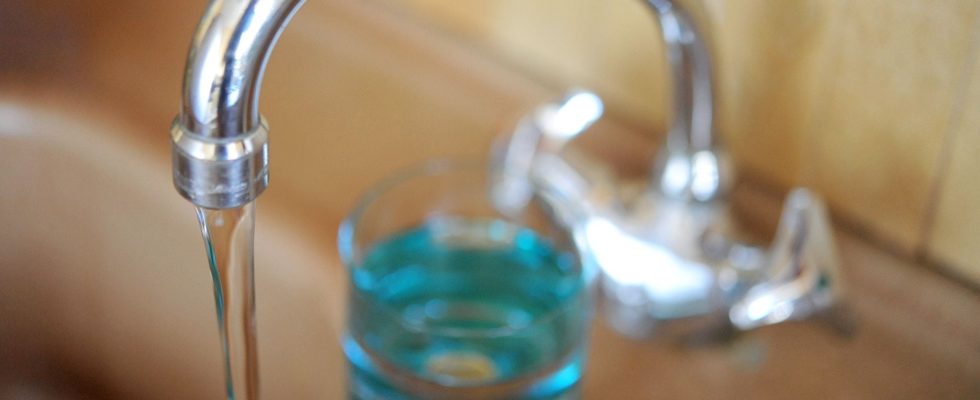Anne Grosperrin delves into her memories. The president of the Greater Lyon Public Water Authority, which supplies the metropolis with drinking water, remembers the urgency that gripped her department at the time of the release of the France Télévisions documentary devoted to environmental contamination with polyfluoroalkyls and perfluoroalkylated (PFAS). In 2022 this journalistic investigation demonstrates the extent of contamination with PFAS, chemical compounds sometimes called “eternal pollutants”, produced in particular by industry for their non-stick properties. There she discovered the importance of contamination for the Lyon region.
“We have investigated and carried out hundreds of analyzes to understand the nature of the pollution, its origin, the transit time of emissions between factories and their arrival in the water catchment areas…” The most affected municipalities are those located south of the “chemistry valley”. “They were exposed head-on,” she relates. The authority is studying the problem, discussing the connection of these municipalities to the water network in the north of Lyon, protected from pollution. But the solution chosen is the “quickest and simplest”: a new water treatment device using an activated carbon filter at the plant supplying the three municipalities. The work is in progress, for an amount of 6 million euros. They should last until the end of 2025 and will allow the water distributor to return to acceptable compound thresholds in 2026.
Like the alert observed in the Lyon metropolitan area, the presence of micropollutants has become a major public health subject. Regularly, new pesticide metabolites – chemical compounds resulting from the degradation of synthetic molecules – microplastics or chemical compounds are discovered in drinking water. The strengthening of controls and technological developments in the detection of pollutants have highlighted these new substances with potentially dangerous effects for health. Last year, the National Agency for Food, Environmental and Occupational Health Safety (ANSES) revealed that a third of the water distributed in France contained the presence of a metabolite of chlorothalonil, a fungicide. marketed by Syngenta used until 2022 in agriculture in France, and banned in Europe since 2020. Likewise, samples taken in 2020 by the environmental association for the fight against pollutants Générations futures reported pollution of surface water by PFAS, almost “generalized on French territory”, with the exception of a few departments.
An investment of 1 billion euros for the Ile-de-France Water Union
Beyond the primary need to reduce emissions of polluting molecules, the scale of this new pollution raises the question: will water intended for consumption need to be treated more precisely? Currently, only a quarter of the water distributed receives complete treatment, which includes passage through activated carbon filters or membranes capable of capturing these particles. “It seems obvious that new, more advanced treatment solutions will become widespread,” notes Christelle Wisniewski, professor of pharmaceutical and biological sciences at the University of Montpellier. Regulatory constraints should also accelerate the use of these more advanced treatments. From 2026, the European directive on drinking water must be applied in France. It plans to integrate PFAS into routine health monitoring of drinking water. The possible identification of new contaminants therefore pushes authorities and manufacturers to implement new solutions.
The Ile-de-France Water Union (Sedif), which ensures the drinking water supply of 4 million inhabitants, has chosen to strengthen its infrastructure to fight against micropollutants, including PFAS. The project, which represents 1 billion euros of investment, should make it possible to equip its three water purification plants by 2027. Operated by Veolia, they will soon have complex filtration systems, by reverse osmosis, capable of stopping the smallest polluting elements, and in particular those of the PFAS family, with “short chain”, the most recalcitrant to filtering. “The use of this new membrane system is a response to the immense variety of micropollutants that we are discovering and especially to everything that we do not yet know. This barrier will make it possible to retain much more than the conventional sector,” explains Sylvie Thibert, water quality and health risk management engineer at Sedif.
The polluter pays principle
This highly technological process is also developed by Suez in its water purification plants in Valenciennes and Orléans. However, it cannot be adapted everywhere, because it is not without constraints: passing through reverse osmosis requires very high pressure in the filters, and therefore a need for increased electricity to operate the pumps. The cost of the investment is also a barrier to the extension of this solution for small municipalities. “The implementation of these solutions must be done on a case-by-case basis, around hotspots of pollution, where the concentration rates are the highest. But the treatment techniques must above all be chosen according to the elements that we seek to eliminate”, underlines the chemist Mathieu Ben Braham, scientific and regulatory mission manager within Générations futures. The latter therefore pleads for a strengthening of the monitoring of PFAS and identification of new pollutants.
Because all this will have a cost. Last February, a report by the Rhône MP Cyrille Isaac-Sibille on “eternal pollutants” estimated the total cost of treating drinking water to eliminate these compounds at 238 billion euros per year across the European Union. chemicals. Anxious not to increase the consumer’s bill, the authorities now hope to have the polluter pays principle recognized in court. “This increase in the bill for consumers is difficult to understand, even though they are not the ones at the origin of this pollution,” notes Mathieu Ben Braham. It is in this sense that the metropolis of Lyon took the chemists Daikin and Arkema to court at the end of March to determine responsibility for the PFAS pollution and force the two companies to finance the clean-up. “If, in the long term, the principle is not recognized, we will be forced to increase water prices,” warns Anne Grosperrin. A double penalty for users, which could add anger to the health risk.
.
